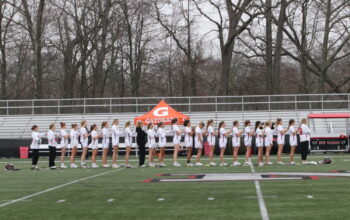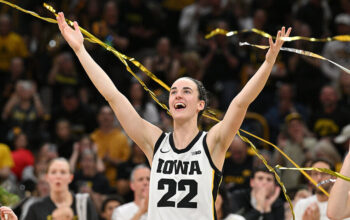Jenny Levine
Arts, Entertainment, Technology Editor
@JALevineCourant

On a rainy Sunday afternoon, sleep deprived high school students gather at Norwalk City Hall, which also doubles as a concert facility. As more and more students arrive, one can notice the gap in ages, as kids as young as 5th grade and matured senior musicians warm up together. The concertmaster enters and takes his place in the first seat, the air tenses, play time is over, the Norwalk Youth Symphony (NYS) begins rehearsal.
Like in any other sport or theatre program, there is competition to be the highest ranked musician among peers at NYS. “What’s interesting is amongst the instruments you see more competition. Violinist are definitely the most competitive,” senior cellist and eight year veteran of the NYS, Emily Azzarito said. “Cellists are definitely more chill, most people agree, but there is some competition, everyone wants that first spot in their section.”
Serious musicians realize that to make it in the big leagues, one has to be fluent in more than one instrument. “Music

is like learning math or any other subject, you have to work your way up,” junior and two year member of NYS, Claire Conley said, “so playing the violin was my Algebra I, the piano was the bulk of my learning because it involves music theory and learning notes, so that’s Algebra II and Precalc, while Oboe is like the icing on the cake or like Calculus,”
A musician who is looking to improve his or her craft at a young age is allowed the privilege of auditioning at the symphony. “My private teacher, Mr. Levitan who people might know as the elementary school orchestra teacher, took me under his wing in 4th grade and started to give me lessons at home and he told me that joining this orchestra would better my playing,” Emily said. “So in 5th grade, I auditioned, got accepted and have been there ever since.”
Auditioning for this prestigious organization is an arduous process that yields stress from the most experienced of musicians. “You have to pick two contrasting pieces, for example a slow and a fast piece, you have to learn the full piece which might be three pages long, but they’ll only have you play one page of it,” senior and three year member of NYS, Kyle Street said. “They’ll also give you a piece of sight reading which is usually extremely difficult. During the audition, two conductors from the two main orchestras, principle and concert, listen to you and decide what level of play you should be at.”

NYS has a well oiled system in which musicians are split into different orchestras by their level of play. “At the top, where I’ve finally arrived, is the principal orchestra, that’s mainly high schoolers and some very talented middle schoolers,” Emily said. “A step down from that is concert orchestra, which is also a full orchestra of brass, strings, wind.”
Each level has their own conductors and sectional coaches, most students agree that the conductor has to fulfill a certain criteria to be considered great. “The perfect conductor can read their orchestra. Our conductor, Jonathan Yates, is good at reading because he makes sure he gets work done, but he’s good at telling when we’re getting bored with the music and he’ll tell us a quick story about his weekend, which kind of brings us back together,” Kyle said. “Jonathan takes a train in from Manhattan from his job at Sarah Lawrence, every Sunday, so you know he’s dedicated to us.”
Because NYS is open to students from all over, some consider the symphony to be a great way to meet new people. “I tend to spend more time with the woodwind section and no one in that section is from NCHS,” Claire said. “It was more intimidating last year because it was my first year in the principal orchestra, but the people love to do what you do so there is that common interest that binds us.”
The NYS primarily performs classical music, which many musicians consider a positive. “What a lot of people get mixed up is that classical has a lot of different genres within it, there’s Romanticism later pieces, they’re romantic, beautiful, gushing pieces, but we also go back all the way to Baroque and classical eras, so there’s a variety,” Emily said. “You get exposed to every different style and a bunch of different composers.”

NYS is also exposed to different cultures through field trips to the concert halls of Germany, as well as visiting orchestras. “Last year we played with a group called Intake, they were from Venezuela and Colombia and played traditional concert pieces, but with native Latin instruments,” Kyle said. “With them, we played a Latinized version of Frank Sinatra, so that was definitely an different, interesting experience.”.
At the end of the day, musicians find NYS to be a competitive yet friendly environment, that allows them to practice their craft in an advanced playing field. “It’s hard to meet soloist musicians when everyone’s focused on themselves and their own playing, and orchestra is an excuse to bring 70 great musicians together every week to rehearse and give concerts,” Emily said. “It’s exciting to see people who are as passionate about music as you are.”



